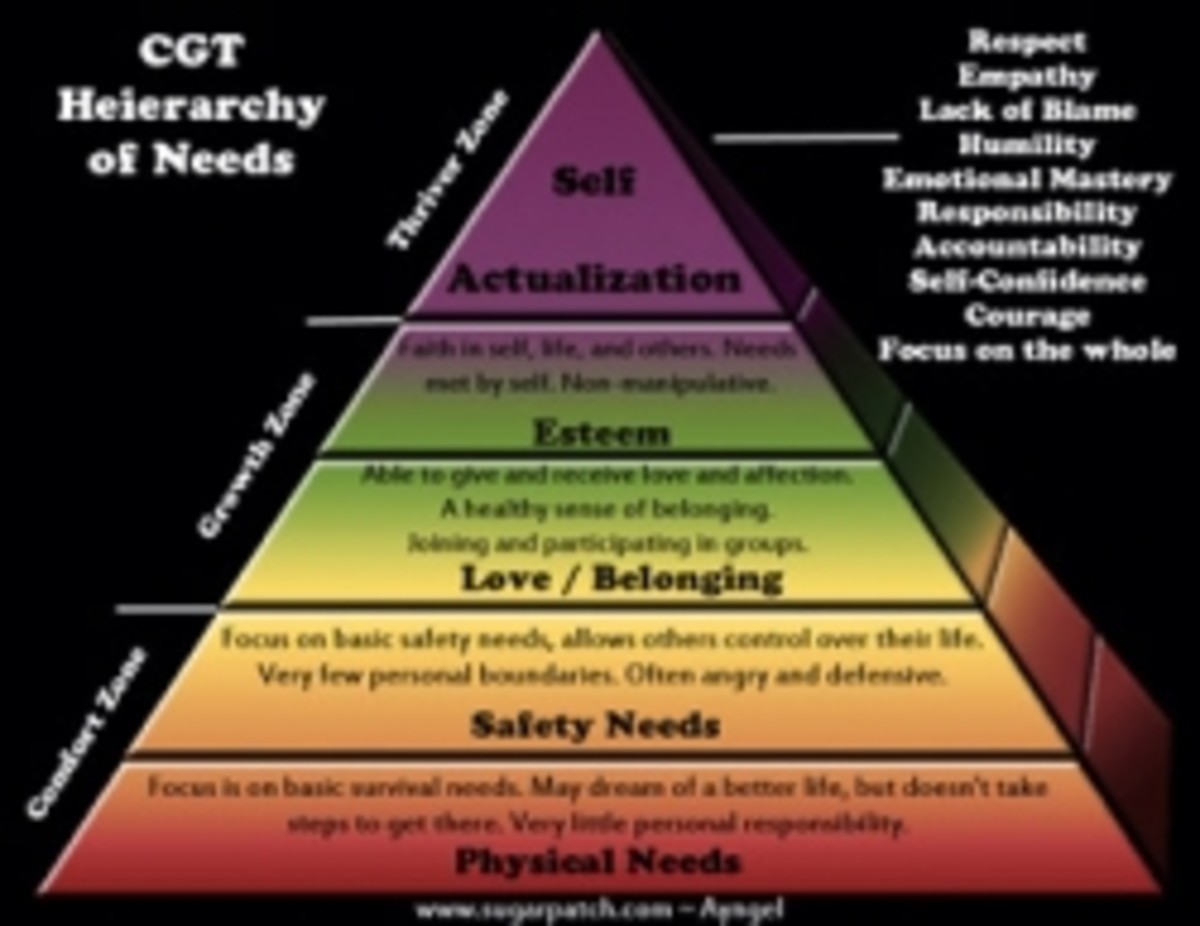I Was Born This Way: Temperament and Genetics


Introduction
I love the song “Born This Way” by Lady Gaga. The song is a celebration of differences in sexual orientation but it applies to many of the differences we are born with. The triumphant chorus states “I’m beautiful in my way, ‘cause God makes no mistakes. I’m on the right track baby, I was born this way.” I think that's an incredible, affirming statement.
We’ve always known that people come with different personalities. The ancient Greeks labeled four types of temperament: melancholic (sad), choleric (irritable), sanguine (cheerful) and phlegmatic (stoic). In the mid-20th century scientists, particularly psychiatrists and psychologists, used to think that our individual personality traits, the way we are as people, were completely the result of our upbringing. According to this reasoning, if a child grew up to have problems it was completely the parent’s fault, which was a terrible burden and often just plain wrong. One of the major advances in the field of psychiatry in the recent decades is overturning this idea. Which is not to say that upbringing doesn’t matter; it certainly does. Parents still have both the privilege and responsibility of being the major influences on a child’s life and development. But more and more science has shown that some components of our personality are actually genetic and part of us from the moment of birth. Upbringing influences and modifies, but the basic material is there at the start.
I was born THIS way!
Which do you see as your strongest trait?
The Science of Temperament
These inborn qualities are grouped together under the name of temperament. The lists of traits that are encompassed under temperament are many and varied, but the scientific literature at this point supports four major dimensions of being as genetic and observably present in infants under a month old. These dimensions are Novelty Seeking, Harm Avoidance, Reward Dependence, and Persistence. Novelty Seeking is the defined as the tendency to explore and feel very energized by new things, people and experiences. Harm Avoidance is the tendency to have an intense reaction to negative events and to avoid negative or possibly negative (meaning new) experiences. Reward Dependence refers to the tendency to respond very strongly to rewards (including social rewards, like praise and approval) and to maintain rewarded behavior. Persistence refers to the tendency to continue a behavior despite the lack of immediate reward. None of these traits are considered good or bad. They just are. They also aren’t all or none. Most of us will fall on a spectrum, having stronger tendencies towards some traits and weaker tendencies towards others.
Three of these characteristics (Novelty Seeking, Harm Avoidance and Reward Dependence) have been linked to three of the major neurotransmitters in the brain, dopamine, serotonin, and norepinephrine. These are the three neurotransmitters affected by most antidepressants. Some studies have even linked variations of specific genes to variations in these dimensions of being. Differences in Novelty Seeking appear to be linked to different versions of the dopamine receptor gene DRD4 and differences Harm Avoidance seem to be linked to versions of the serotonin transporter gene 5HTTLPR. These interactions aren’t simple and easy to define, because the environment in which a child is raised will actually influence how these genes and their associated traits are expressed in a particular individual. For example a child with a particular variation on the DRD4 gene raised in a hostile environment may have extremely high novelty seeking (which can cause impulsive and sometimes law-breaking behavior) while a child with the same variation raised in a consistently loving environment won't show that effect. A child with a different variation of that gene might have the same temperamental qualities regardless of their environment. Complicated, right? Studies on these traits and their associated genetics typically involve tens of thousands of individuals followed over a period of decades and there are still more unknowns than knowns. Still, it is exciting research, even in its infancy.

Practical Conclusions
So what does this mean for the average person in day-to-day life? I think there are a few helpful conclusions that can be drawn. The first is that part of who you are is genetic. You inherited it just as you inherited your hair color, your height, and your Aunt Betty’s nose. So if, like me, you are inherited a high level of Harm Avoidance, you should recognize that the tendency to be anxious in new situations is pretty natural for you. It’s not something to criticize or blame yourself for. It won’t help you to negatively compare yourself to your outgoing and bubbly cousin or scold yourself for hanging back. Instead you can offer yourself understanding and gentleness, and recognize when your own genetics are at work.
The second helpful conclusion is that your environment does influence how these traits are expressed. Again, to take the example of strong Harm Avoidance, if your environment offers you safe ways to experience new things and succeed then your tendency to shy away from new experiences will be softened. It won’t be completely eradicated; you will probably always think a little more carefully than most people before jumping into something, but you can learn to go ahead and try new things. Similarly, you can learn to temper your Reward Dependence by tolerating disapproval, modulate your Novelty Seeking by finding pleasure in the familiar, quiet and calm and gentle your Persistence by allowing yourself to walk away at times. So if your temperament is on the extreme end of the spectrum and is limiting you from living the life you want to live, there is something you can do about it. This is even something you can do for yourself, by gently pushing at your limits. When you consistently do things that seem a little bit uncomfortable, but tolerably so, you expand your limits of what you are able to do. This is similar to an athlete training her body by gradually running further and faster; never too much at once, always just on the edge of what she is able to do.
The third helpful conclusion is remembering that other people have temperaments too. It can be frustrating to be around someone whose temperament is quite different than yours, particularly if he or she is a family member or someone you spend a lot of time with. You can end up wondering why this person is just not behaving the way you think he or she should in a situation. However by keeping in mind this idea of genetic, inborn differences in our approaches to life we can extend compassion and tolerance to others. Just because someone takes a different approach doesn't make them wrong. They are also on the right track; they were born this way.



